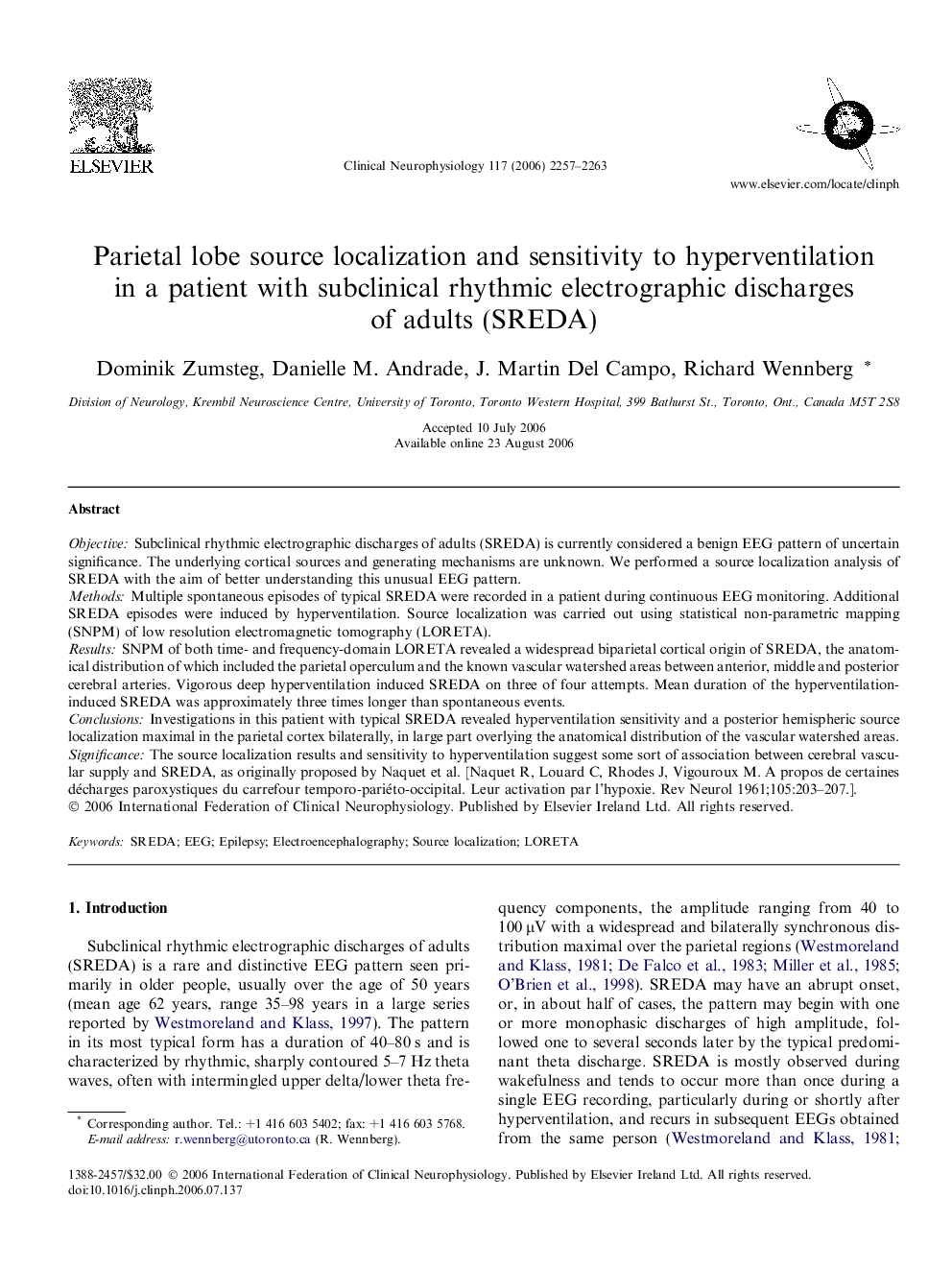| Article ID | Journal | Published Year | Pages | File Type |
|---|---|---|---|---|
| 3047675 | Clinical Neurophysiology | 2006 | 7 Pages |
ObjectiveSubclinical rhythmic electrographic discharges of adults (SREDA) is currently considered a benign EEG pattern of uncertain significance. The underlying cortical sources and generating mechanisms are unknown. We performed a source localization analysis of SREDA with the aim of better understanding this unusual EEG pattern.MethodsMultiple spontaneous episodes of typical SREDA were recorded in a patient during continuous EEG monitoring. Additional SREDA episodes were induced by hyperventilation. Source localization was carried out using statistical non-parametric mapping (SNPM) of low resolution electromagnetic tomography (LORETA).ResultsSNPM of both time- and frequency-domain LORETA revealed a widespread biparietal cortical origin of SREDA, the anatomical distribution of which included the parietal operculum and the known vascular watershed areas between anterior, middle and posterior cerebral arteries. Vigorous deep hyperventilation induced SREDA on three of four attempts. Mean duration of the hyperventilation-induced SREDA was approximately three times longer than spontaneous events.ConclusionsInvestigations in this patient with typical SREDA revealed hyperventilation sensitivity and a posterior hemispheric source localization maximal in the parietal cortex bilaterally, in large part overlying the anatomical distribution of the vascular watershed areas.SignificanceThe source localization results and sensitivity to hyperventilation suggest some sort of association between cerebral vascular supply and SREDA, as originally proposed by Naquet et al. [Naquet R, Louard C, Rhodes J, Vigouroux M. A propos de certaines décharges paroxystiques du carrefour temporo-pariéto-occipital. Leur activation par l’hypoxie. Rev Neurol 1961;105:203–207.].
